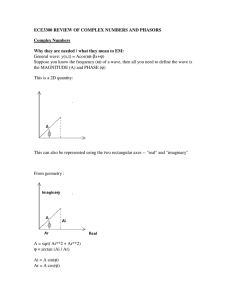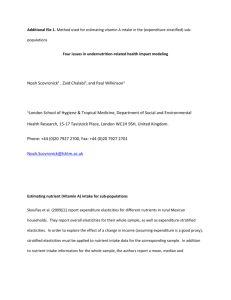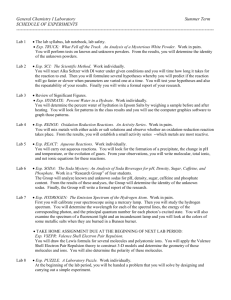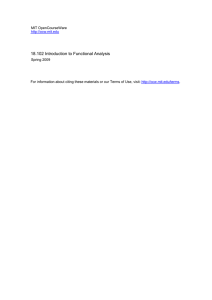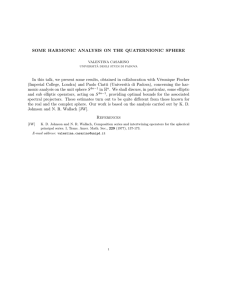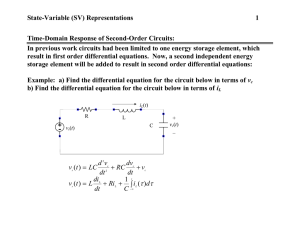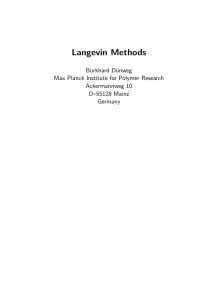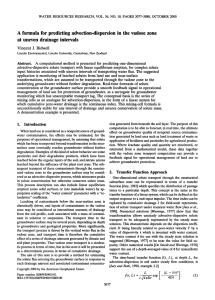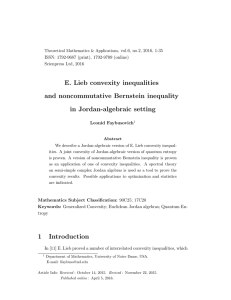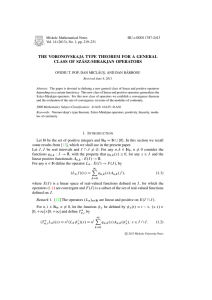8.514: 9/16/03 Coherent states
advertisement
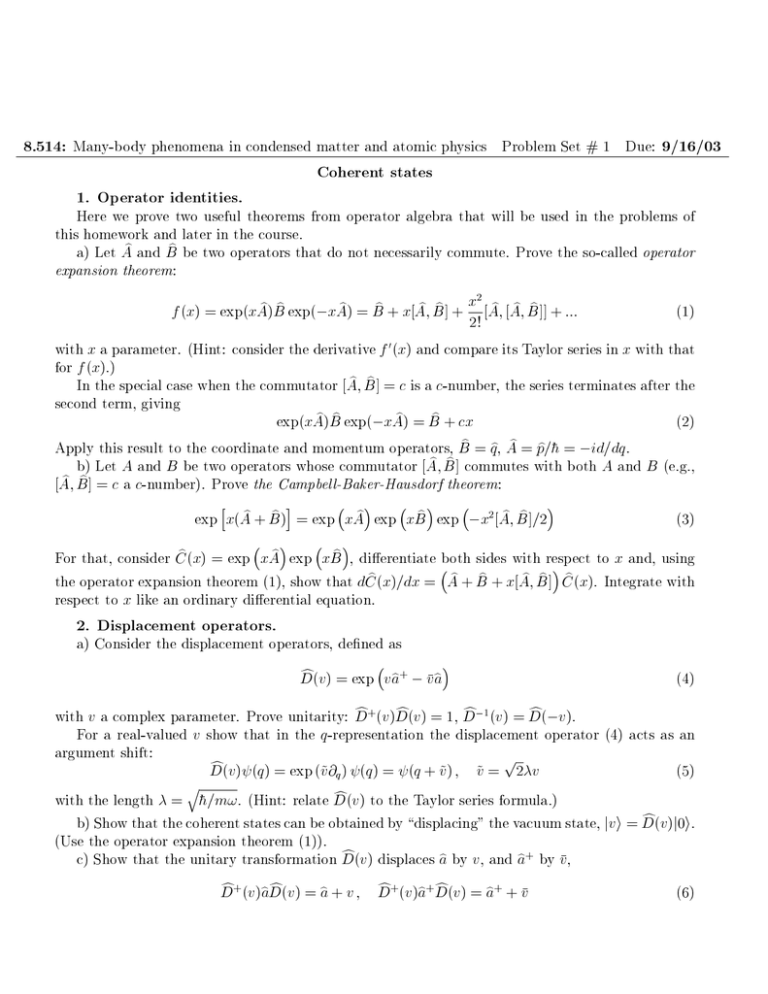
8.514: Many-body phenomena in condensed matter and atomic physics Problem Set # 1 Due: 9/16/03 Coherent states 1. Operator identities. Here we prove two useful theorems from operator algebra that will be used in the problems of this homework and later in the course. a) Let Ab and Bb be two operators that do not necessarily commute. Prove the so-called operator expansion theorem: x2 Ab Ab Bb ]] + ::: (1) 2! with x a parameter. (Hint: consider the derivative f (x) and compare its Taylor series in x with that for f (x).) In the special case when the commutator Ab Bb ] = c is a c-number, the series terminates after the second term, giving exp(xAb)Bb exp(;xAb) = Bb + cx (2) b h Apply this result to the coordinate and momentum operators, Bb = qb, Ab = p= = ;id=dq. b) Let A and B be two operators whose commutator Ab Bb ] commutes with both A and B (e.g., Ab Bb ] = c a c-number). Prove the Campbell-Baker-Hausdorf theorem: f (x) = exp(xAb)Bb exp(;xAb) = Bb + xAb Bb ] + 0 h i exp x(Ab + Bb ) = exp xAb exp xBb exp ;x2 Ab Bb ]=2 (3) For that, consider Cb (x) = exp xAb exp xBb , dierentiate both sides with respect to x and, using b b b b b b the operator expansion theorem (1), show that dC (x)=dx = A + B + xA B ] C (x). Integrate with respect to x like an ordinary dierential equation. 2. Displacement operators. a) Consider the displacement operators, dened as c(v ) = exp v ab+ ; vab D (4) c+ (v )D c(v ) = 1, D c 1 (v ) = D c(;v ). with v a complex parameter. Prove unitarity: D For a real-valued v show that in the q-representation the displacement operator (4) acts as an argument shift: p c(v ) (q ) = exp (~ D v@q ) (q) = (q + v~) v~ = 2v (5) q c(v ) to the Taylor series formula.) with the length = h=m! . (Hint: relate D c(v )j0i. b) Show that the coherent states can be obtained by \displacing" the vacuum state, jvi = D (Use the operator expansion theorem (1)). c(v ) displaces ab by v , and ab+ by v, c) Show that the unitary transformation D ; c+(v )aD b c(v ) = ab + v D c+(v )ab+ D c(v ) = ab+ + v D (6) For any function of operators ab and ab+ with a power series expansion, show that c+(v )f (ab a+ )D c(v ) = f (ab + v a+ + v) D (7) d) Prove the product formula c(v )D c(v ) = ev v� D 0 0 D(v + v ) v�0 v c ; (8) 0 c(v ) and D c(v ) commute only when arg(v ) = arg(v ). Note that the displacement operators D 0 0 3. Harmonic oscillator excited by an external force. a) Consider a particle moving in a parabolic potential in the presence of a time-dependent force, H = 21 h! (pb2 + qb2 ) ; F (t)qb. Show that the evolution in time of an arbitrary coherent state can be obtained using the displacement operators (4) studied in Problem 2. Assume that the evolved coherent state remains a coherent state at all times, so that ji(t) = Dc(v(t))ji = j + v(t)i (9) Obtain a dierential equation for the function v(t) and show that its real and imaginary parts correspond to the classical Hamilton equations dq=dt = p, dp=dt = F (t). c(v (t))HD c 1 (v (t)) gives a free oscillator Hamiltonian Show that the unitary transformation H = D with F (t) = 0. It describes the transformation of the quantum problem to the classical co-moving reference frame. How does the function v(t) should evolve in time in order for is such that at all times it remains a coherent state b) The harmonic oscillator of part a), initially in the ground state, was subject to a constant force during the time interval 0 < t < . Find the state at t > . Determine the distribution of energies. c) For the state found in part b) at t > , nd the phase-space density, i.e., the Wigner function W (q p), as a function of time. 0 ;

